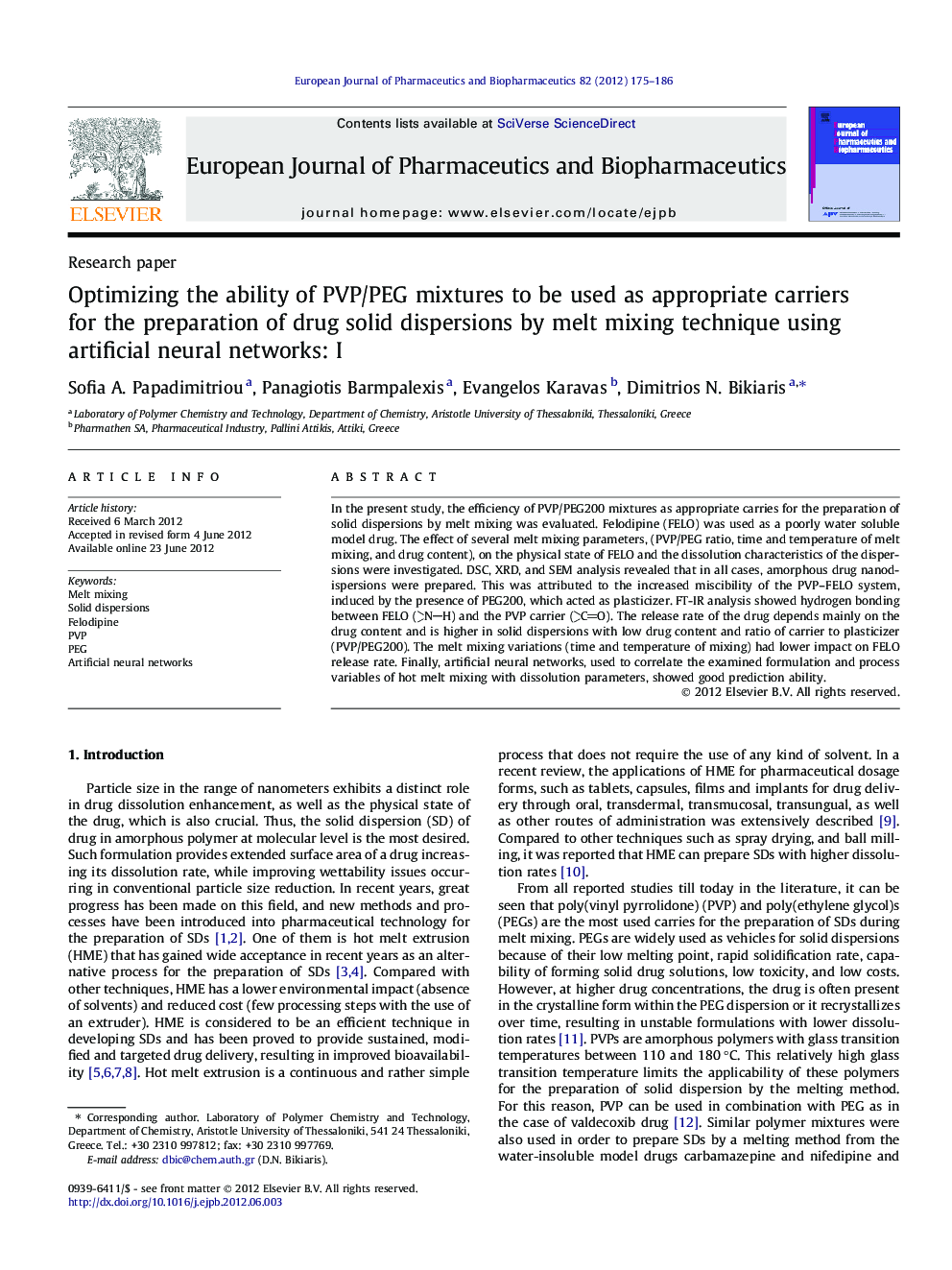| Article ID | Journal | Published Year | Pages | File Type |
|---|---|---|---|---|
| 2085308 | European Journal of Pharmaceutics and Biopharmaceutics | 2012 | 12 Pages |
In the present study, the efficiency of PVP/PEG200 mixtures as appropriate carries for the preparation of solid dispersions by melt mixing was evaluated. Felodipine (FELO) was used as a poorly water soluble model drug. The effect of several melt mixing parameters, (PVP/PEG ratio, time and temperature of melt mixing, and drug content), on the physical state of FELO and the dissolution characteristics of the dispersions were investigated. DSC, XRD, and SEM analysis revealed that in all cases, amorphous drug nanodispersions were prepared. This was attributed to the increased miscibility of the PVP–FELO system, induced by the presence of PEG200, which acted as plasticizer. FT-IR analysis showed hydrogen bonding between FELO (NH) and the PVP carrier (CO). The release rate of the drug depends mainly on the drug content and is higher in solid dispersions with low drug content and ratio of carrier to plasticizer (PVP/PEG200). The melt mixing variations (time and temperature of mixing) had lower impact on FELO release rate. Finally, artificial neural networks, used to correlate the examined formulation and process variables of hot melt mixing with dissolution parameters, showed good prediction ability.
Graphical abstractOptimal neural network architecture employing amount of FELO in solid dispersions (X1), ratio of polymeric carrier to plasticizer (X2), temperature of melt mixing (X3), and total melt mixing time (X4) as input units and amount of API resealed in 15 min (Y15min) as an output unit.Figure optionsDownload full-size imageDownload high-quality image (55 K)Download as PowerPoint slide
